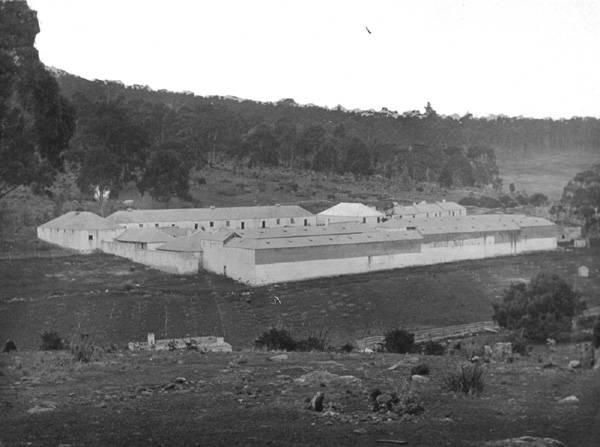 |
 |
|
Maria Island
Maria Island on the east coast of Van Diemen's Land operated as a penal station between 1825 and 1832. The settlement, which was located at Darlington, was conceived as a half-way house between the extreme of hard labour at Macquarie Harbour and a stint in a road or chain gang. Convicts sent to Maria Island worked in a number of different industries including timber-cutting, tanning, shoe-making and cloth production. An unusual feature of the settlement was that it was fitted out with a mechanised textile factory powered by water. Plagued by frequent escape and other disciplinary problems, Maria Island was closed down and much of the remaining convict population relocated to Port Arthur in 1832. After being abandoned for ten years, the site was reopened in 1842 as a probation station. A second station was constructed in 1845 at Point Lesueur. Convicts at both were primarily engaged in agricultural work. Overcrowding remained a constant problem, however, and both stations were closed down in 1850. Among the convicts who served time at Maria Island were the Young Irelander William Smith O'Brien, two Khoi (from the Cape Colony), and five Maori transported as a result of frontier colonial conflict. Following its abandonment as a convict station, the island was used to run sheep. In the 1880s Diego Bernacchi launched a number of ultimately unsuccessful business ventures under the banner heading of the 'Maria Island Company'. An attempt by the National Portland Cement Company to set up a works on the island in the 1920s also failed in the Great Depression. The island was declared a National Park in 1971. Further reading: M Weidenhofer, Maria Island, Melbourne, 1991. Hamish Maxwell-Stewart |
Copyright 2006, Centre for Tasmanian Historical Studies |
